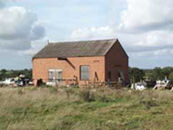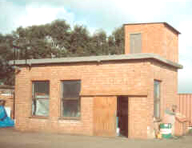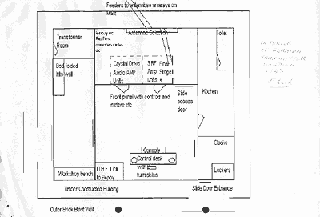|
 |
 |
 |
 |
 |
 |
 |
 |
 |
 |
 |
 |

Dept. Electra House - Gawcott Radio Station
|
 |
 |
 |
|
|
|
|
|
|
|
|
 |
|
|
|
|
The drivers were only allowed into the cloakroom, where the box containing the records was signed for and the previous box returned. Each disc had a numbered card with details of the transmitter frequency and the antenna array. Also, the times of the broadcast. The discs were played at 33 1/3rpm. with the arm tracking from the inside to the out, so as not to betray the fact that the programme was recorded. Due to ionospheric conditions, most transmissions were made during the evening and night with the day reserved for routine maintenance, such as valve changes, tending to the generators and mending any of the fences damaged by cattle. Eventually Germanium was linked by landline to the studio broadcasting Soldaten Sender Calais and records were no longer transmitted. Now the work concentrated on monitoring the programme for distortion and adjusting for any frequency drifts. At Gardenia a new |
|
|
 |
 |
|
|
 |
The former riggers hut as it appears today.
|
|
|
|
 |
|
system was also employed, in late 1944, for communicating with S.H.A.E.F. Transmitting morse, this consisted of a Hellschreiber machine fed by a punched tape running at high speed. As it ran, the tape spewed from the reels onto the floor but soon this was replaced by new filter equipment to the incoming landlines, such that the tapes were abolished with the machine directly coupled to the lines. After the war the radio station was expanded and remained in Government use until recently. Today the site accommodates a number of small businesses. |
|
|
|
|
|
 |
|
|
 |
|
|
 |
|
 |
|
|
|
|
 |
|
|
|
The brick built hut, that housed the wartime diesel generator.
|
|
 |
|
|
|
|
 |
|
|
 |
Floor plan of the Geranium transmitter building in 1943
|
|
|
|
|
|
|


